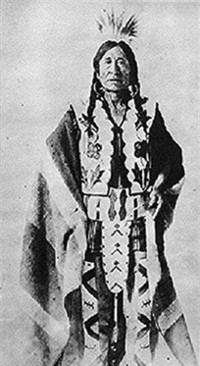Facts about Ojibwa

The first significant new Ojibwa culture-center was their "fourth stopping place" on Manidoo Minising (Manitoulin Island).

Members of the Red Lake Band of Ojibwa in northern Minnesota are making efforts to live in harmony with their land, restoring fisheries, and enhancing wetlands and other wildlife habitats.

The Ojibwa or Chippewa (also Ojibwe, Ojibway, Chippeway) is one of the largest groups of Native Americans-First Nations in North America.

Before contact with Europeans, Ojibwa religion had little formal ceremony.

Continuing their westward expansion, the Ojibwa divided into the "northern branch" following the north shore of Lake Superior, and "southern branch" following the south shore of the same lake.

The eastern Ojibwa lived a sedentary lifestyle, engaging in fishing, hunting, the farming of maize and squash, and the harvesting of Manoomin (wild rice).

Through the efforts of Chief Buffalo and popular opinion against Ojibwa removal, the bands east of the Mississippi were allowed to return to permanent reservations on ceded territory.
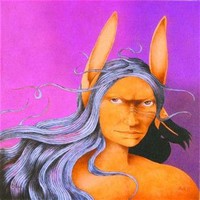
Nanabozho is the Ojibwa trickster figure and culture hero (these two archetypes are often combined into a single figure in First Nations mythologies).

Contemporary Ojibwa still use the sweat lodge during important ceremonies and to pass along their oral history.

At their "third stopping place" near the present-day city of Detroit, Michigan, the Anishinaabeg divided into six divisions, of which the Ojibwa was one of these six.

The Ojibwa/Chippewa are part of the Anishinaabe peoples, together with the Odawa and Algonkin peoples.

Traditionally, the Ojibwa construct dreamcatchers by tying sinew strands in a web around a small round or tear-shaped frame (in a way roughly similar to their method for making snowshoe webbing).

The Ojibwa viewed the world in two types: animate and inanimate, rather than male and female genders.

The Ojibwa Nation was the first to set the agenda for signing more detailed treaties with Canada's leaders before many settlers were allowed too far west.

Some Minnesota Ojibwa tribal councils cooperate in the 1854 Treaty Authority, which manages their treaty hunting and fishing rights in the Arrowhead Region.

Ojibwa who were originally located about the Mississagi River and made their way to southern Ontario are known as the Mississaugas.

The Ojibwa together with the Ottawa and Potawatomi peoples formed the Council of Three Fires which fought with the Iroquois Confederacy and the Sioux.

Ojibwa who subsequently moved to the prairie provinces of Canada have retained the name Saulteaux.

Most Ojibwa were of the Woodlands culture, hunter-gatherers who harvested wild rice and maple sugar.

Following the migration there was a cultural divergence separating the Potawatomi from the Ojibwa and Ottawa.
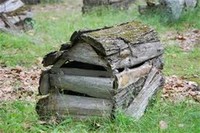
The Ojibwa would bury their dead in a burial mound; many erect a jiibegamig or a "spirit-house" over each mound.

The Ojibwa also have a story of a Great Deluge that has been passed down from generation to generation over the centuries.

The Ojibwa have a number of spiritual beliefs passed down by oral tradition under the Midewiwin teachings.
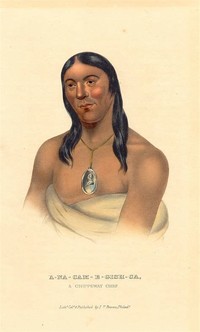
The Saulteaux (also Salteaux pronounced ) are a First Nation in Ontario, Manitoba, Saskatchewan, Alberta, and British Columbia, Canada, and a branch of the Ojibwa.

Ojibwa people have achieved much in many walks of life—from the chiefs of old to more recent artists, scholars, sportsmen, and activists.

Spiritual beliefs and rituals were very important to the Ojibwa because spirits guided them through life.
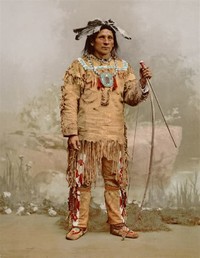
The Ojibwa presence was made highly visible among non-Native Americans and around the world by the popularity of the epic poem The Song of Hiawatha, written by Henry Wadsworth Longfellow in 1855.

The Ojibwa believe that a dreamcatcher filters a person's dreams: Only good dreams would be allowed to filter through; bad dreams would stay in the net, disappearing with the light of day (Andrews 1997).

Ojibwa understanding of kinship is complex, and includes not only the immediate family but also the extended family.

Often, earlier treaties were known as "Peace and Friendship Treaties" to establish community bonds between the Ojibwa and the European settlers.

The Ojibwa people were divided into a number of odoodeman (clans; singular: odoodem) named primarily for animal totems (doodem).

The typical Ojibwa dwelling was the wiigiwaam (wigwam), built either as a waaginogaan (domed-lodge) or as a nasawa'ogaan (pointed-lodge), made of birch bark, juniper bark and willow saplings.

Several Ojibwa bands in the United States cooperate in the Great Lakes Indian Fish & Wildlife Commission, which manages their treaty hunting and fishing rights in the Lake Superior-Lake Michigan areas.

Despite facing poverty and high levels of unemployment, many contemporary Ojibwa continue to follow traditional ways, both practical and spiritual.

The Ojibwa expanded eastward, taking over the lands alongside the eastern shores of Lake Huron and Georgian Bay.

The Ojibwa viewed the world in two types: animate and inanimate, rather than male and female genders.

The Ojibwa presence was made highly visible among non-Native Americans and around the world by the popularity of the epic poem The Song of Hiawatha, written by Henry Wadsworth Longfellow in 1855.


